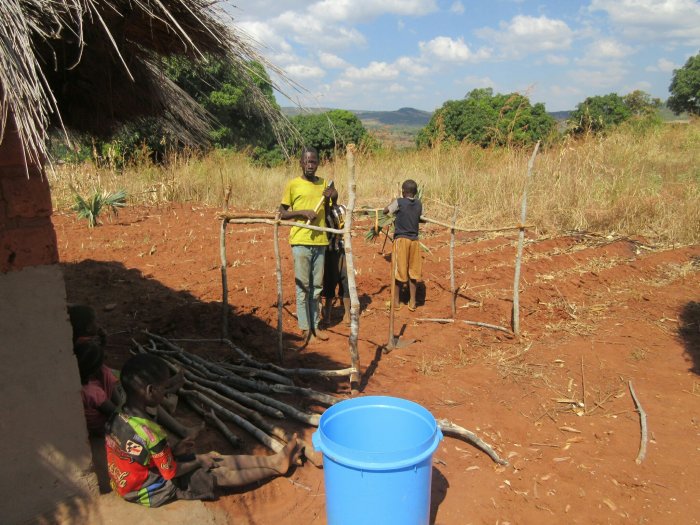
Reading this week:
- Time Enough for Love by Robert A. Heinlein
- The Moon is a Harsh Mistress by Robert A. Heinlein
One of the things that has driven in the impact of poverty for me here in Zambia are the schools. It is a challenge to get an education here in Zambia, especially for rural kids or the urban poor, and it isn’t really anybody’s fault, it seems to me, it’s just the way things are.
Schools are split into primary and secondary school. Primary school goes from grades 1-7, and first grade starts at about age 5 or 6. Secondary school goes from grades 8-12, and after that is University. Kids are not required to go to school by law like in the US.
In my village, the closest primary school is in the next village over, about 4 km away. There’s no bus or other transport, so if kids want to go to school they have to hike over there. The nearest secondary school is in the boma (the term for town, as a step up from village), 12 km away. This is pretty impossible for a commuter, so if you want to go past grade 7, you usually wind up going to boarding school. Some primary schools actually go up to grade 9, and this is an effort to make school more accessible.
So now let’s talk about cost. I’ll talk about secondary school first, and also mention that currently the exchange rate is about 10 kwatcha (the Zambia currency, abbreviated ZMW or just K, as in K10) to $1 USD. To go to secondary school you have to pay school fees. School fees vary by location and school, but I’ll talk about my area. For the non-boarding schools, fees range from about K350-K500 per term, with three terms in the year. For the boarding schools, this price jumps up to K900 or more per term. For grades 8 and 9 at some of the primary schools, these fees drop to about K150-250, but that is for a rural area.
Now, primary school. Primary school is supposed to be free. It is in fact illegal to charge school fees for grades 1-7. But this, in most cases, is impossible. The school system in Zambia is pretty severly underfunded. As I said in the beginning of the post, I don’t really blame anyone for that, and this isn’t a criticism of any government policy, just an unfortunate reporting of the facts of life in Zambia for these rural farmers. Schools wind up charging school fees for these grades (they’re usually labelled “Parent Teacher Committee Funds,” or somesuch) to pay for basic school necessities like chalk and paper. These fees will also go towards paying volunteer teachers. They’re called volunteer, but they do get paid a small amount. The one data point I have is K400/month.
Volunteer teachers are required because most schools are understaffed due to a lack of teachers in the country. The older schools I see tend to have about half as many teachers as they are “supposed” to, based on the student population, and I know at least one school with only one government-paid teacher. His school has 150 students, grades 1-6, though there are 600 children in the area served by his school. There are three major reasons that keep those other 450 kids away. The first is school fees. When schools charge school fees for these grades, they are generally on the order of K10-20 per term. This is what drove the meaning of poverty home for me, because the thing between these kids and school is something less than $6 a year. That’s heaping a little too much blame on school fees alone, because the kids also usually have to show up in a uniform (usually home-made), wear shoes (most people wear sandals, known as “tropicals”), and have the materials to learn, all of which also add up. Then, when you multiply this by the number of children in a family, it adds up further. However, with that caveat, I think a Happy Meal at McDonalds runs on the order of $5.
Let’s cover the other two reasons real quick. One is that parents will require these kids to stay home to help work. Most of these villagers are subsistence farmers, growing maize and a small selection of other vegetables just to eat. Keeping the kids home to help work can be vital to keeping that up and running. The third reason that keeps girls home is that girl’s education is usually less valued than a boy’s. Women are not expected to be breadwinners, and the education required to be a good wife does not require school. In one of the nearby schools, of the 14 students in the 9th grade class (as a sign of the attrition rate, there are closer to 100 kids in 1st grade), there are only 2 girls.
Since the costs of going to secondary school are at least an order of magnitude higher, most kids only make it through grade 7 if they make it that far. That obviousely puts them at a major disadvangate for getting a job, or even really at having the math and reading skills needed to really make a farm profitable and successful. That continues the cycle of keeping kids out of school.
But enjoy this picture of my friend and a Zombie hoard of kids:










You must be logged in to post a comment.